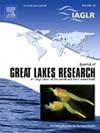Effect of an invasive species Mnemiopsis leidyi on the zooplankton community structure in the Caspian Sea
IF 2.4
3区 环境科学与生态学
Q3 ENVIRONMENTAL SCIENCES
引用次数: 0
Abstract
During the past three decades, the Caspian Sea (CS) ecosystem has undergone striking changes due to anthropogenic activities, particularly following the invasion of comb jelly Mnemiopsis leidyi that overfed on zooplankton in the late 1990 s. This study investigated the temporal and spatial patterns of the zooplankton community in CS over 25-year intervals using univariate and multivariate analyses. The objective was to assess the status of the zooplankton community through a comparison of the pre-invasion (1994–96) and post-invasion (2009–11 and 2018–19) of M. leidyi in the CS. The study revealed more zooplankton taxa for the pre-invasion period and fewer for the post-invasion period of 2018–19. Several key species such as Eurytemora grimmi, Polyphemus exicus, Synchaeta sp., and Calanipeda aquae dulcis disappeared post-invasion, and more than 50 taxa decreased to one-third in the post-invasion period. The abundance and diversity indices significantly declined following the invasion. The visualization of non-metric multidimensional scaling (nMDS) showed that periodic variations were more explanatory than assessments based on subareas and seasonal intervals. Significant differences were observed in the zooplankton assemblages across the three periods. In addition to highly affecting the zooplankton community, certain pelagic fish populations, notably those belonging to the kilka genus (Clupenella), have experienced significant decline as a result of M. leidyi invasion. In conclusion, the invasion of M. leidyi has caused major changes to the abundance and diversity of tropic levels in the CS, possibly through a combination of bottom-up and top-down forces at work in the ecosystem.
求助全文
约1分钟内获得全文
求助全文
来源期刊

Journal of Great Lakes Research
生物-海洋与淡水生物学
CiteScore
5.10
自引率
13.60%
发文量
178
审稿时长
6 months
期刊介绍:
Published six times per year, the Journal of Great Lakes Research is multidisciplinary in its coverage, publishing manuscripts on a wide range of theoretical and applied topics in the natural science fields of biology, chemistry, physics, geology, as well as social sciences of the large lakes of the world and their watersheds. Large lakes generally are considered as those lakes which have a mean surface area of >500 km2 (see Herdendorf, C.E. 1982. Large lakes of the world. J. Great Lakes Res. 8:379-412, for examples), although smaller lakes may be considered, especially if they are very deep. We also welcome contributions on saline lakes and research on estuarine waters where the results have application to large lakes.
 求助内容:
求助内容: 应助结果提醒方式:
应助结果提醒方式:


